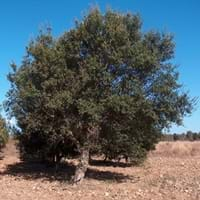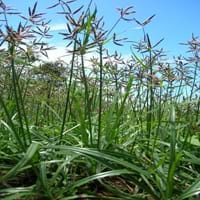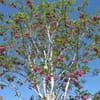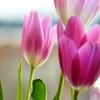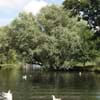Life Span
Perennial
Perennial
Origin
Southern Europe, Mediterranean, Northern Africa
World/Pandemic
Types
Not Available
Not Available
USDA Hardiness Zone
7-9
5-12
Sunset Zone
5, 6, 7, 8, 9, 10, 11, 12, 13, 14, 15, 16, 18, 19, 20, 21, 22, 23, 24
A1, A2, A3, H1, H2, 1a, 1b, 2a, 2b, 3a, 3b, 4, 5, 6, 7, 8, 9, 10, 11, 12, 13, 14, 15, 16, 17, 18, 19, 20, 21, 22, 23, 24
Habit
Oval or Rounded
Mat-forming
Minimum Width
Not Available
Flower Color
Red, Yellow green
Orange, Gold, Bronze, Tan
Flower Color Modifier
Bicolor
Bicolor
Fruit Color
Not Available
Dark Brown
Leaf Color in Spring
Green, Gray Green, Dark Green
Green, Yellow green
Leaf Color in Summer
Gray Green, Dark Green
Green, Yellow green
Leaf Color in Fall
Gray Green, Dark Green
Green, Yellow green
Leaf Color in Winter
Gray Green, Dark Green
Green, Yellow green
Leaf Shape
Lobed
V-Shaped
Plant Season
Spring, Summer, Fall, Winter
Not Available
Sunlight
Full Sun, Partial Sun
Full Sun, Partial Sun
Growth Rate
Slow
Very Fast
Type of Soil
Clay, Loam, Sand
Clay, Loam, Sand
The pH of Soil
Acidic, Neutral, Alkaline
Acidic, Neutral, Alkaline
Soil Drainage
Average
Average
Tolerances
Drought, Salt
Drought
Where to Plant?
Ground
Ground
How to Plant?
Seedlings, Stem Planting, Transplanting
creeping rhizomes, Seedlings, Tubers
Plant Maintenance
Medium
Medium
Watering Requirements
Average Water Needs, Do Not over Water, Keep ground moist, Never Over-water, Requires watering in the growing season, Water less during winter
Requires consistently moist soil
In Summer
Lots of watering
Lots of watering
In Spring
Moderate
Moderate
In Winter
Average Water
Average Water
Soil pH
Acidic, Neutral, Alkaline
Acidic, Neutral, Alkaline
Soil Type
Clay, Loam, Sand
Clay, Loam, Sand
Soil Drainage Capacity
Average
Average
Sun Exposure
Full Sun, Partial Sun
Full Sun, Partial Sun
Pruning
Remove damaged leaves, Remove dead leaves, Requires little pruning
Remove damaged leaves, Remove dead branches, Remove dead leaves
Fertilizers
fertilize in growing season
All-Purpose Liquid Fertilizer
Pests and Diseases
Spider mites
Rust
Plant Tolerance
Drought, Salt
Drought
Flowers
Insignificant
Insignificant
Flower Petal Number
Not Available
Single
Foliage Texture
Medium
Fine
Foliage Sheen
Glossy
Not Available
Allergy
no allergic reactions
Oral Allergy
Aesthetic Uses
Landscape Designing
Not Used For Aesthetic Purpose
Beauty Benefits
Not Available
Good for skin, Protects from sun damage
Environmental Uses
Absorbs greenhouse gases, Air purification, Amazing growth rate, Food for birds, Food for insects, Nesting sites for birds, Prevent Soil Erosion, Shadow Tree
Air purification
Medicinal Uses
Nutrients
Aphrodisiac, Digestive, Diuretic, Tonic
Part of Plant Used
Bark, Seeds, Stem, Tree trunks
Fruits
Other Uses
Economic Purpose, Used in construction
For making oil, used for weaving hats
Used As Indoor Plant
No
No
Used As Outdoor Plant
Yes
Yes
Garden Design
Feature Plant, Shade Trees, Street Trees
Not Available
Botanical Name
QUERCUS suber
CYPERUS esculentus
Common Name
Cork Oak
Nut Sedge,chufa sedge, nut grass, yellow nutsedge
In Hindi
कॉर्क ओक
अखरोट सेज
In German
Kork Eiche
Nuss -Segge
In French
Cork Oak
souchet
In Spanish
alcornoque
tuerca de la juncia
In Greek
Cork Oak
καρύδι σπαθόχορτο
In Portuguese
sobreiro
Nut Sedge
In Polish
Cork Oak
nakrętka turzyca
Phylum
Anthophyta
Magnoliophyta
Class
Magnoliopsida
Liliopsida
Family
Fagaceae
Cyperaceae
Clade
Angiosperms, Eudicots, Rosids
Angiosperms, Commelinids, Monocots
Subfamily
Mirinae
Not Available
Number of Species
Not Available
Not Available
Importance of Corn Oak and Nut Sedge
Want to have the most appropriate plant for your garden? You might want to know the importance of Corn Oak and Nut Sedge. Basically, these two plants vary in many aspects. Compare Corn Oak and Nut Sedge as they differ in many characteristics such as their life, care, benefits, facts, etc. Every gardener must at least have the slightest clue about the plants he wants to plant in his garden. Compare their benefits, which differ in many ways like facts and uses. The medicinal use of Corn Oak is Nutrients whereas of Nut Sedge is Aphrodisiac, Digestive, Diuretic and Tonic. Corn Oak has beauty benefits as follows: Not Available while Nut Sedge has beauty benefits as follows: Not Available.
Compare Facts of Corn Oak vs Nut Sedge
How to choose the best garden plant for your garden depending upon its facts? Here garden plant comparison will help you to solve this query. Compare the facts of Corn Oak vs Nut Sedge and know which one to choose. As garden plants have benefits and other uses, allergy is also a major drawback of plants for some people. Allergic reactions of Corn Oak are no allergic reactions whereas of Nut Sedge have Oral Allergy respectively. Having a fruit bearing plant in your garden can be a plus point of your garden. Corn Oak has showy fruits and Nut Sedge has no showy fruits. Also Corn Oak is not flowering and Nut Sedge is not flowering . You can compare Corn Oak and Nut Sedge facts and facts of other plants too.
